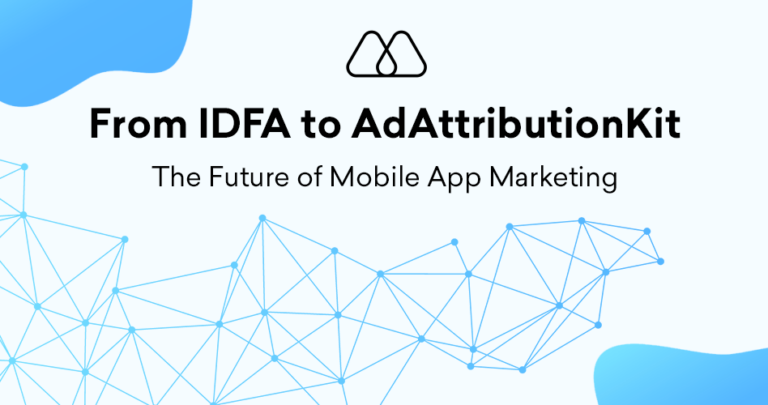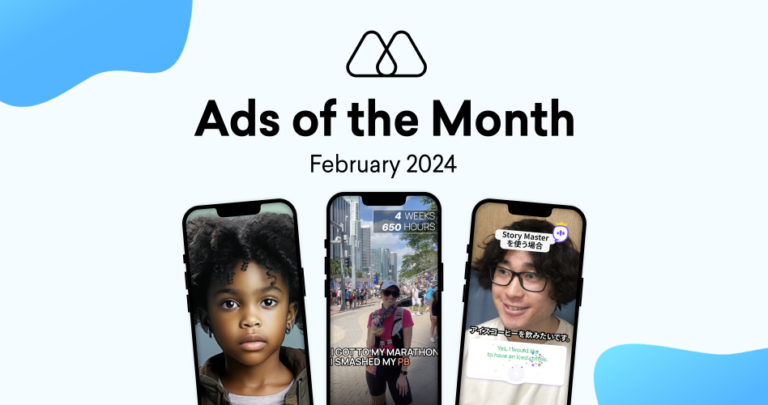Are you a developer who’s eager to make the best new mobile game on the market? Whether you already have a winning concept or working beta model, the best way to succeed in this competitive industry is by learning by example from successful companies.
So, what does it take to craft a game that players will come back to again and again? What effective elements do the best of the best have in common? We’re answering all that and more in this article, where we examine what unites the most popular mobile games, and how you can replicate their success in your own mobile game. Speaking with gaming User Acquisition manager Claire Rozain, we’ll deep-dive into the key traits needed to make a top-grossing mobile gaming hit.

We spoke with Claire Rozain, working at Carry1st - scaling awesome content in Africa:
"I'm a full stack Growth Manager who experienced offline and online user acquisition and worked on 30 games, 4 dating apps, 2 mobility apps. I like to learn from our differences but also make the best value of it which led me to also have an inclusive game design ad marketing role. Puzzle society Founder and cats and dog lover!"
Setting expectations: How much do the most popular mobile games make?
Let’s first consider the biggest indicator of a successful mobile game: how much revenue it can potentially generate?
In general, the mobile games industry is thriving, with the total revenues forecast to reach $286.50 billion in 2023. Based on this, it’s clear that there’s lots of potential for developers to make big profits if their games prove popular.
Obviously, the best mobile games make the most money, but just how successful are they really? Well, according to data from AppMagic, the iconic title Angry Birds 2 has made over $500 million in lifetime revenue ever since its 2015 launch, and most of this has been achieved via in-app purchases. Meanwhile, similar flagship titles like COD Mobile and Pokemon Go have also managed to achieve over $3 and $4 billion in lifetime revenues, respectively.
However, although the scale of these titles, and the capabilities of their developers, might appear outwardly-intimidating, a large development team isn’t a guarantee of success. In fact, there’s plenty of room for new contenders.
As Claire states: “Nowadays it’s way easier when you are small team to be top of the chart, because you need to be fast and reactive to the market and provide snackable content. When you are a big company, this is more difficult, because you have so many stakeholders.”
Although the above games are now all considered industry juggernauts, the games themselves all started small at one time or another. So, what’s their secret and what do they each have in common?
What features do the most popular mobile games have in common?
A great mobile gaming idea
For starters, the core concept behind each individual mobile gaming experience is the most important part of building any top-grossing platform. To stand out from the crowd and ensure you can keep up your engagement and replayability, you’ll need to develop a mobile gaming concept with a very strong value proposition. If you’re chasing the maximum potential revenue, you’ll want a game that’s intuitive and easy-to-understand that new players can pick-up-and-play, as well something that’s highly marketable and with broad appeal.
However, while all of the above is important to consider from a pragmatic standpoint, your foremost goal as a creator should be to develop a game you love and would be interested in playing yourself.
This is because modern gamers love to see publishers with authenticity since they know it’ll be reflected in the quality of the game. For example, for a more casual game, the core concept may revolve around a unique game mechanic to progress through levels, or for a mid-core game it may be focused on the character personalities and game narrative. Game development is tough, and the only way to see a project to its conclusion is with a game that you sincerely believe deserves to win an audience.
Alternatively, you could create one of the most popular mobile games by licensing existing IP. This method allows you to capitalise on established brand awareness of already-famous fictional characters/worlds and convert users more easily. Common strategies involving this method include releasing a mobile game soon after the release of a popular film or TV show, like The Queen’s Gambit, Marvel’s Avengers, or Harry Potter, which allows you to capture the existing audience of an already-popular franchise.
A great team
An equally vital part of top-grossing mobile gaming experiences are the people behind them. As Claire tells it: “you cannot have a good game if you do not have a good team.”
It’s particularly useful if your creative team can double as your production team, since they’ll be able to build early iterations of characters, worlds, game mechanics and so on with ease. Similarly, fostering this sort of cross-collaboration means you’ll be able to work on a short production cycle and respond more effectively to market needs. Luckily, as Claire mentioned, this can be easier for younger, more agile publishers.
For example, of the most popular mobile games in July 2023 (as reported by Mobilegamer.biz), the youngest company at only four years old held the third-highest spot. What’s more, three of the remaining nine were only founded in the last 10 or so years!
A great UX and art style
The penultimate factor to consider is your mobile game’s UI and design. Naturally, this will vary depending on which genre your game sits within, but most popular mobile games stick to the following:
- Keep it simple: Casual and hyper-casual mobile gaming users may not have the time or interest to master complex controls and game mechanics. Delivering an intuitive and enjoyable mobile gaming experience means your game has the lowest barrier to entry and widest possible appeal, meaning you can attract large user numbers more easily.
- Carefully scale your difficulty: Managing user progression is a delicate and constant balancing act, particularly in competitive games like Candy Crush, FPS titles, RPGs and card games. Even large publishers get it wrong sometimes! Small game patches and updates can accidentally skew outcomes towards certain playstyles and ruin the gameplay for users. So, ensure that difficulty levels rise consistently so player progression feels earned and rewards are balanced.
- Clean visuals: Most mobile devices only come with a ~6 inch screen size, which means that developers don’t have a lot of space to work with when designing mobile gaming interfaces. Try to simplify your UI where possible and ensure users have an unobstructed view of the action.
A great growth plan
Finally, top-grossing games don’t happen overnight. So, once you’ve got your mobile game ready, it’s time to publish it and start acquiring users. We talk about UA a lot already here at Miri, so be sure to check out our other articles on the subject.
Interestingly, many of the most popular mobile games available today also benefit from a healthy organic growth (sometimes called a ‘K-factor’). This is because their core gaming experience is so strong that users tell their friends and family, meaning you can acquire users without spending money.
Achieving organic growth is hardest at the early stages, so try to focus on spend-based strategies at first. As a result, you’ll be able to forecast user number and growth targets more accurately, and any added organic UA success is a bonus. Once your user base starts growing, you’ll also need to think about ways to retain them. Mobile gaming audiences are highly selective, as the app category only has a 2.4% average retention rate by 30 days (third-lowest of all the app categories).
However, this isn’t consistent across sub-genres. Casual mobile gaming titles have the highest 30-day retention rate (owing to their ease of use) at 4.5%. By contrast, midcore titles have the lowest at 2.3%, as this audience will be split between hardcore and casual playing habits. As with revenue figures, it’s important to set expectations so you understand whether your app is under or overperforming against the industry average.
Looking more long-term, expansion content like premium features, storylines, character skins, collectables and more are a great way to retain your audience. You’ll want to find ways to fully-realise your initial concept and start creating rich mobile gaming experiences so audiences never want to leave. To help you get started, try experimenting with the newly available reporting features available in SKAN 4.0.
Barriers to creating the best mobile games of the season
The world’s top-grossing games all share a truly global appeal. They can be played by gamers of any age, nationality, or skill level and the core gameplay loop is instantly engaging. Therefore, as a developer you’ll need to consider a number of issues in order to successfully break into and retain users across markets. Some of these issues include:
Mobile gaming accessibility
Accessible design practices are an especially important issue, as around 1 in 6 people worldwide experience some form of disability. As a result, there’s considerable demand for mobile games that cater to these needs. For more info, check out our dedicated article on our top tips for designing for accessibility in mobile gaming.
Similarly, you’ll also need to account for disparities in the storage space and process power of mobile devices between different markets. Taking the extra steps to optimise your mobile game across operating systems can make it easier to acquire users in fast-growing markets like Latin America and Africa where the penetration of flagship mobile devices isn’t as strong.
To help you get started, try running your game on real hardware and testing its performance with and without high-end post processing features. Similarly, small steps like minimising the use of transparency can help reduce processing burdens on GPUs.
Localisation
Differences in global purchasing power can create barriers for some overseas users. This is because they may face a hard time paying for in-app purchases (IAPs) since their local currency is weaker than the dollar, pound or euro. Instead, regional pricing strategies can help maximise revenues, as you’ll be able to convince a larger pool or active users into making purchases.
Just don’t forget about your payment options. As Claire explains: “beyond the localisation of the price, currency, and pricing base, you also have to diversify all the ways users can pay for your app.”
For example, according to the 2023 Global Payments Report, mobile wallets are extremely popular in the APAC region, while credit and debit cards are mostly used in the Middle East, North America, Africa and Europe (the latter to a lesser extent).
Monetisation
It’s more difficult to monetise less invested players who are used to accessing the core experience of casual, freemium games. This is why successful monetisation is such an important part of creating a top-grossing mobile gaming platform.
For example, according to the 2023 Mobile Growth and Monetization Report from Unity, around 55% of IAP revenues come from in-game currencies, sales events, and bundles, so focus on these transactions in your IAP strategy. What’s more, first-time buyers are more likely to convert if transactions fall between $1 and $5, so keep transaction values low. Lastly, 77% of players who engage with in-app purchases (IAPs) will do so within two weeks of install. This means you need to be able to target these users for further revenues, as they disproportionately make up the revenue streams for mobile gaming platforms.
Supercharge your mobile gaming UA strategy with Miri
As you can see, there’s lots that goes into creating some of the most popular mobile games on the market. From a killer IP that keeps users coming back in each release and a highly effective user acquisition and retention plan to a localised pricing plan and strong accessibility, there’s so much to coordinate.
If you need support with your UA strategy, partnering with an agency can be a great option. Miri Growth is a performance marketing and creative agency working with Paid Social channels (Meta, Google, TikTok, Snapchat) and DSPs. We offer comprehensive mobile marketing services – from fully managed User Acquisition to Creative Strategy and Production – helping your game to scale.
You can learn more about our services by getting in touch today.





